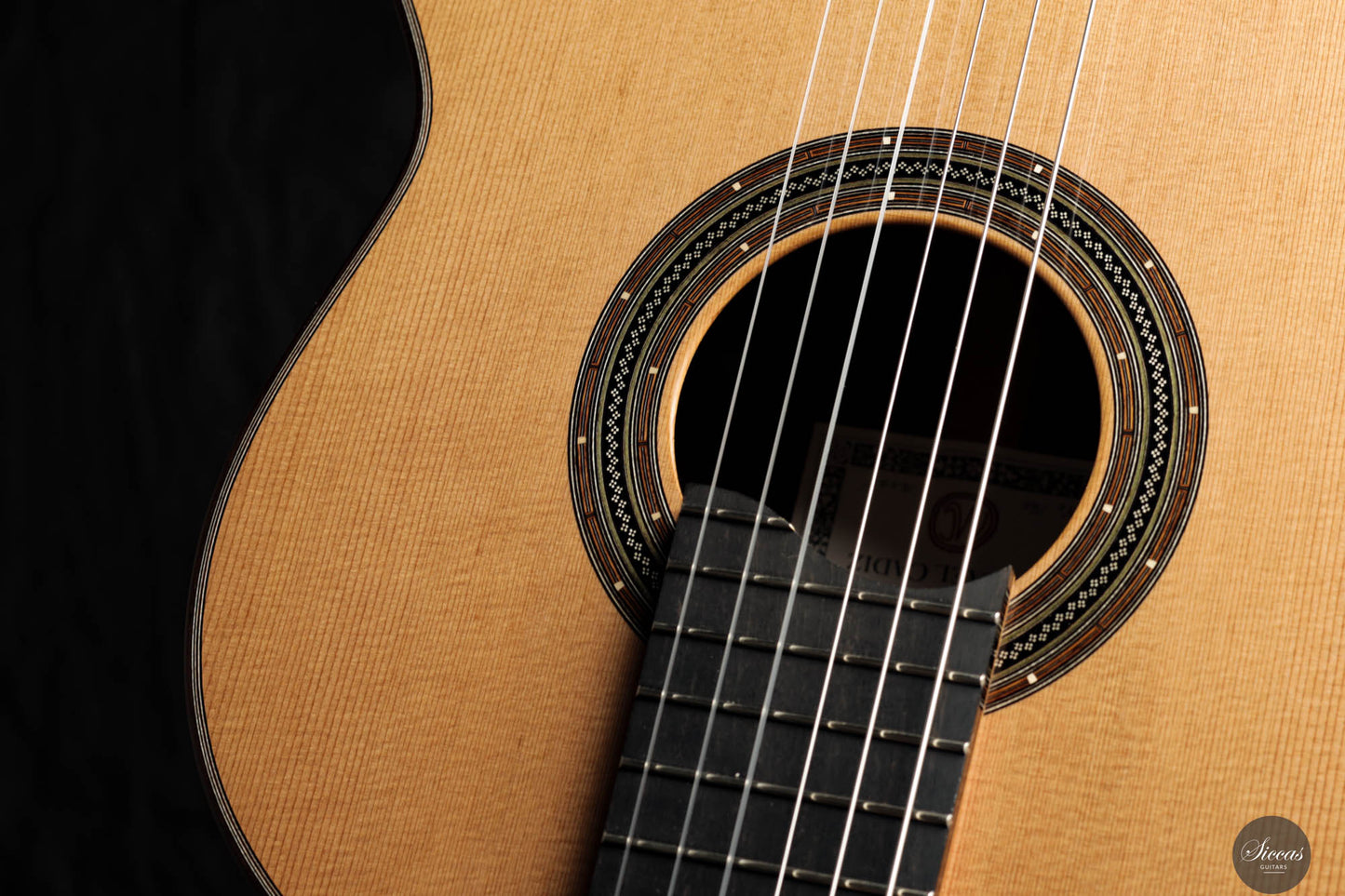Michael Cadiz - 2025 - No.120
Michael Cadiz - 2025 - No.120
Details
Details
Overview
Overview
Shipping important note
Shipping important note
Delivery times are typically reliable and most instruments arrive within the estimated timeframe.
Should any unexpected delay occur, our team will keep you informed and provide support at every step. For all shipping details and exceptions, please see our Shipping Policy.
Details about GPSR
Details about GPSR
























Video overview


More details about the guitar
About the luthier
Michael Cadiz is a Seattle, Washington, native, who moved his workshop to Graz, Austria, in 2016. He built his first guitar at the age of 15. He feels profoundly grateful for Robert Ruck, who invited him to stay for a while in his workshop to share his philosophy and approach to guitar building and from whom he learned a lot. Furthermore, he also received great support from the Seattle builders Rick Davis and Greg Oxrieder. In 2016, he moved his workshop to Graz, Austria, where he has successfully built guitars ever since.About the guitar
The 2025 Michel Cadiz 64 cm guitar is a masterfully built instrument that offers a harmonious fusion of historical inspiration and modern performance. As part of his Modern Concert model, this guitar reflects Cadiz’s vision of blending the charm of late-19th-century Spanish guitars with the demands of contemporary players. Constructed using traditional hide glue and a seven-fan bracing system with minimal cross struts, the guitar strikes a perfect balance between tradition and innovation. Tonally, it leans toward a mid-20th-century sound, characterized by excellent clarity, balance, dynamic range, and timbral variety, while maintaining a traditional voice. Michel Cadiz places a strong emphasis on achieving a clear and even frequency response, ensuring the sound carries effectively in large halls without being overpowered by midrange heaviness. Though the construction is overall slightly stiffer, the guitar maintains a low body resonance, which allows for a blooming bass, even sustain, and greater headroom across the tonal spectrum. The cedar soundboard contributes to warm, round trebles with excellent sustain, while the 64 cm scale combined with a finely shaped neck makes for exceptional playability. As a guitarist himself, Michel Cadiz understands the nuanced needs of players, and this instrument clearly reflects his commitment to playability, responsiveness, and expressive freedom. It is a guitar that performs equally well in intimate settings and large concert halls—a true modern concert guitar rooted in tradition.Regular care extends the life of the instrument
Even with careful use, a classical guitar may gradually change in appearance or respond to unstable storage conditions. Have a close look at your guitar regularly and be attentif to changes. If your instrument is suffering from its environement, it will let you know.
Protect Your Guitar: Handle with Care
Be mindful when touching your instrument with greasy or unwashed hands: any skin contact is a small attack on the varnish. Of course, a guitar is made to be played, but taking a few precautions helps preserve its beauty: wash your hands before playing, wear long sleeves, and avoid unnecessary direct skin contact with the body of the instrument.
Pro tip: Avoid playing with a button-up shirt, heavy jewelry, or a belt, as these can scratch the guitar. Also, make sure your guitar case is free of any objects that could damage the instrument during storage.
String care
A good habit to adopt is wiping down your strings briefly after each playing session. This small action significantly extends their lifespan and helps maintain a consistent, comfortable feel under your fingers.
Most importantly, clean strings are essential for keeping your instrument in tune. Corrosion, sweat, and dust can affect the uniformity of the strings and interfere with accurate tuning across the entire fingerboard.
Pro tip: If you're having trouble getting your guitar in tune, it might be time to change the strings. A useful test is to compare the pitch of the 12th fret harmonic with the fretted note at the 12th fret; if there's an unusually large gap between them, your strings may have lost their integrity and should be replaced.
Keep Your Shellac Finish Shining!
Got a guitar with a shellac (French polish) finish? Here's a simple trick: Take a clean microfiber cloth and gently breathe on the surface to create a light mist. Then, softly rub to remove fingerprints, sweat, and grease. That’s usually all it takes to keep it looking great, no products needed!
Pro tip: Every few years, treat your guitar to a check-up with a luthier to keep it in top shape.
Storing Your Guitar: Climate Matters
Your guitar can safely stay outside its case, as long as the surrounding environment maintains 42–55% humidity and a temperature between 18–25°C.
Keep in mind that humidity levels can still fluctuate inside the case, especially during seasonal changes.
- Too much humidity may cause overtightened strings and a dull tone.
- Too little humidity can lead to a bulging top, string buzz, or even cracks.
Avoid placing your guitar near radiators, air conditioners, or windows with direct sunlight.
Pro tip: Always close your guitar case while playing. This helps preserve a stable microclimate inside the case, so your instrument is protected the moment you put it back in.



















































